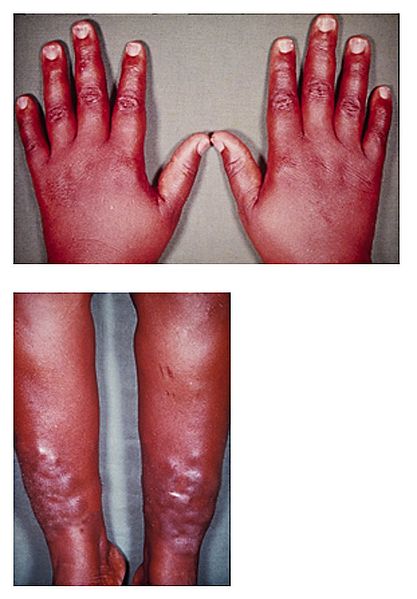Graves' disease physical examination
Jump to navigation
Jump to search
|
Graves' disease Microchapters |
|
Diagnosis |
|---|
|
Treatment |
|
Medical Therapy |
|
Case Studies |
|
Graves' disease physical examination On the Web |
|
American Roentgen Ray Society Images of Graves' disease physical examination |
|
Risk calculators and risk factors for Graves' disease physical examination |
Editor-In-Chief: C. Michael Gibson, M.S., M.D. [1],Associate Editor(s)-in-Chief: Seyedmahdi Pahlavani, M.D. [2]
Overview
Some of the physical examination findings in Graves' disease include tachycardia, stare, eyelid lag, proptosis, goiter, resting tremor, hyperreflexia, and a warm, moist, and smooth skin.
Physical Examination
- Signs include tachycardia, stare, eyelid lag, proptosis, goiter, resting tremor, hyperreflexia, and warm, moist, and smooth skin. [1]
- Rare findings (in <1% of patients) include localized dermopathy (i.e., pretibial myxedema) and thyroid acropachy (i.e., clubbing).
- Goiter (an enlarged thyroid gland, sometimes detectable as a swelling in the neck) and exophthalmos (protuberance of one or both eyes) may be seen on physical examination.
-
Pretibial myxedema (Grave's Disease)
-
Pretibial myxedema and acropachy of hyperthyroidism
References
- ↑ Terry J. Smith & Laszlo Hegedus (2016). "Graves' Disease". The New England journal of medicine. 375 (16): 1552–1565. doi:10.1056/NEJMra1510030. PMID 27797318. Unknown parameter
|month=ignored (help)
